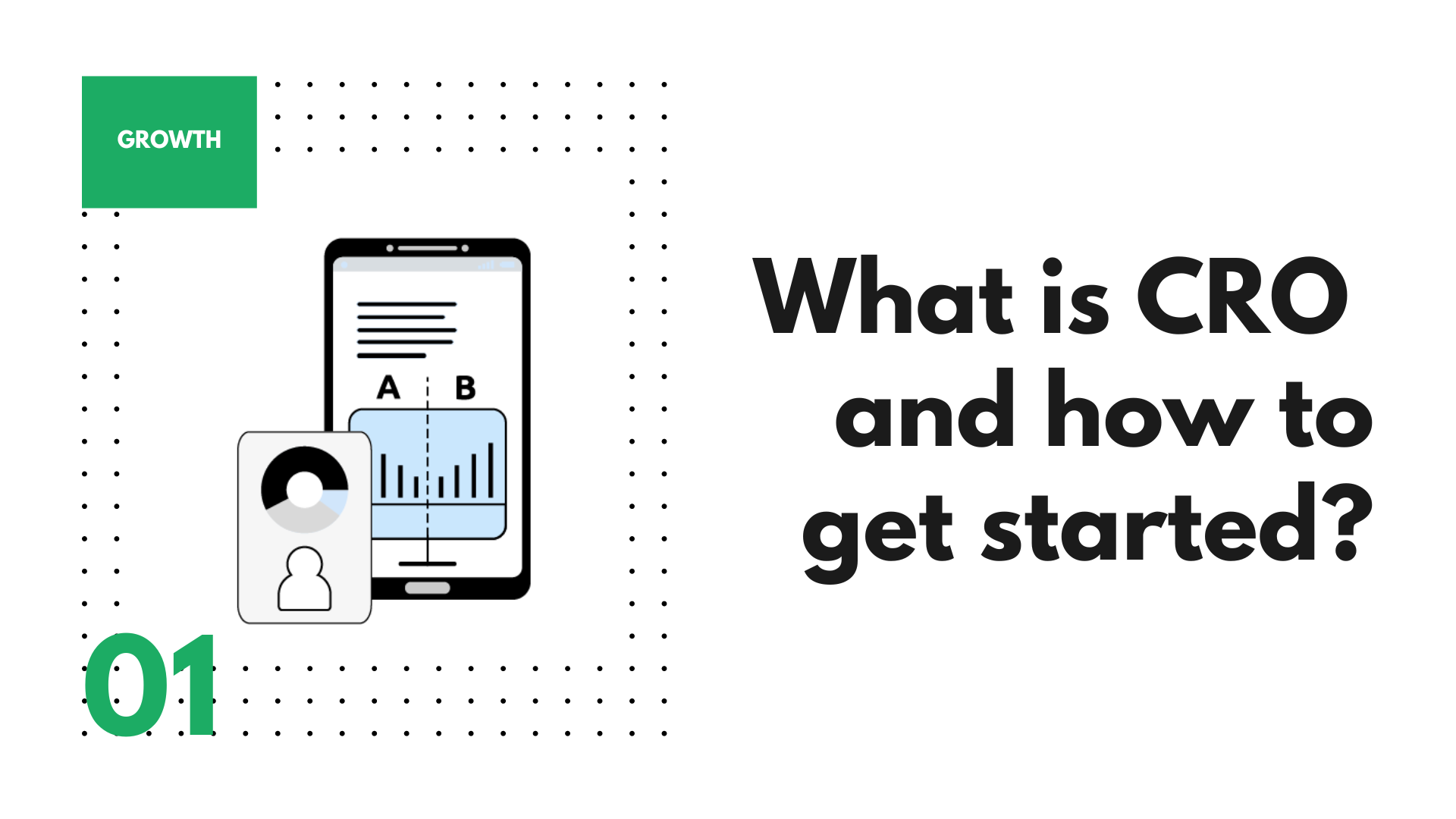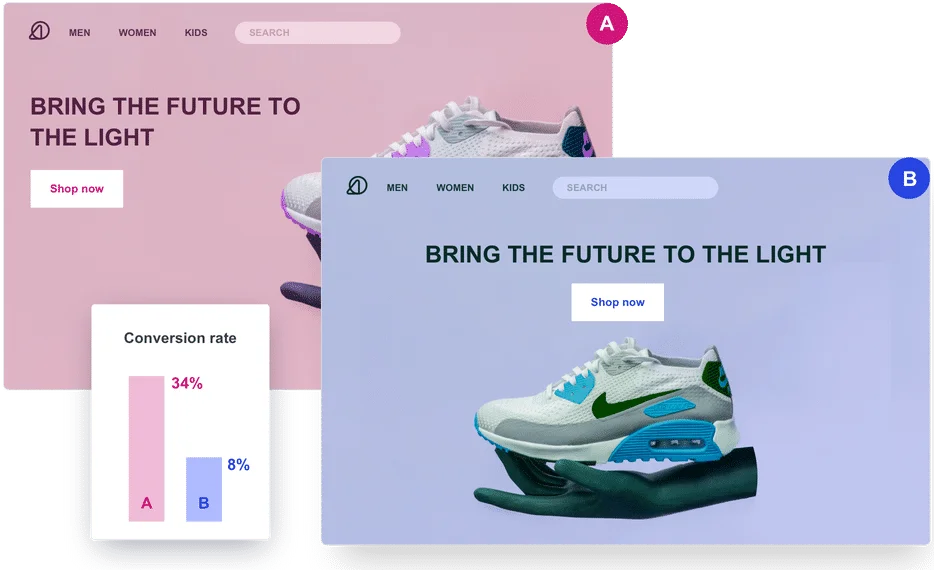Conversion rate optimization (CRO) is the process of improving the percentage of visitors to your website who take a desired action, typically leading to a purchase. In the context of e-commerce, CRO specifically aims to optimize your online store to boost sales.
As an E-commerce business, your goal is simple – to grow your online revenue.
CRO is a data-driven process that involves testing and experimentation. It is also important to have a clear understanding of your customers and their needs to be successful with CRO.
If you want to improve your website’s CRO, there are various actions you can take on different parts of your site.
For example, you can enhance your product pages to boost sales, streamline the checkout process, improve your blog, add personal touches, use pop-up messages, apply psychological principles, and explore various other strategies.
Why is CRO important?
CRO is important because it can help you increase your website’s revenue and profitability. By improving your conversion rate, you can get more value from your existing traffic. CRO can also help you improve your website’s user experience and make it more likely that visitors will return to your site in the future. With a good CRO strategy, you can harvest multiple benefits:
- CRO will save you money
- Gain insights about your customer’s behavior
- Improve ROI and marketing efficiency
- Enhance your site’s usability, navigation, and user experience
- Make decisions based on data and insights, not instinct
How to start optimizing your conversion
Now you’ve learned the benefits of CRO, but where to start? We’ve broken down key steps into the following sections: process, tools and testing targets to give you an overview.
Process
CRO places a huge emphasis on testing and experimentation which should be conducted using the scientific method. Let’s look at the steps involved:
1) Gather data & insights
Data and insights are always your starting point. At this stage, you’d want to gather both qualitative & quantitative data as much as possible, to help you get an overview of your conversion problem.
- Funnel & web analytics: From when the customer comes to your website to perform the action (e.g complete a checkout), the journey often involves several, interconnected steps. Like fixing a leaking pipe, you’ll want to break down the funnel and learn where your customers drop off the most.
- UX heuristic evaluation: Sometimes your conversion problem is as simple as it’s not user friendly enough. Is the navigation clear for customers? Is the message consistent? A UX heuristic audit gives you clues of conversion problems resulting from usability issues.
- Market research: Each industry has its unique landscape and consumer behavior. Doing competitive research to understand your general positioning, offering and pricing and consumer preference helps you assess conversion from a high business level.
2) Formulate hypotheses
Once you consolidate all the findings, the next step is to formulate a hypothesis. We are not jumping into complicated statistical hypotheses yet, but at bare minimum, your hypothesis should consist of three important elements – reasoning, testing variable/action and the desired result.
The sentence structure might look like this:
“Based on (your finding), we believe we can achieve (desired result) by (testing variable/action).”
Let’s try with an example:
“Based on the fact that social proof gives consumers confidence in product quality, we believe we can increase more purchases by adding customer feedback on product pages.”
3) Run a test
After narrowing down the hypotheses and areas you’d like to test, you’ll then move to designing and performing the tests. AB testing (single variate testing) or multivariate testing are the most common methods used. You’ll want to make sure you have proper tools to split the controlled/testing environment and accurate data tracking to help you monitor the results.
4) Analyze
Now it’s time to validate your ideas with data evidence. Judging by the result, is your hypothesis correct? If not, how can you potentially explain the reason? Is there a new hypothesis? Was the experiment flawed? This is the most crucial (yet sometimes neglected) step to learn from the experiments and adjust your testing plan.
5) Reiterate and repeat
Although we call it step 5 here, CRO is indeed not a linear process. Once you gain some thoughts from the previous step, it’s time to decide how to carry the next step. Was the experiment successful? Great! Can you take it to the next level? Should you move on to test other new ideas? If not, should you form a new test based on the corrected hypothesis? CRO is a cycle of continuous hypothesis, testing and learning.
CRO analytic tools
There are many tools to help you conduct CRO smoothly. Below we will provide a few examples:
1. Quantitative user analytic tools
A quantitative analytic tool helps you understand through numerical data, what happened on your website and/or app.
You can use such tools to answer:
- How engaged are your customers? Which User groups are engaging less?
- How long did your customers visit? How many pages have they viewed?
- How many customers go through a specific funnel? Where do they drop off?
- What are the most popular paths of your customers? What products or pages receive the most attention?
Some of our best picks for quantitative user analytic tools include:
Google Analytics 4
Google Analytics is the most commonly used analytics platform in the world. Recently, Google introduced the new Google Analytics 4 (the Universal Analytics , i.e. old GA, will be sunsetted by Jul 1, 2023. If you haven’t migrated to GA4 yet, let us give you a hand). Not only can you analyze traffic, but the new GA4 also offers enhanced insights on customer journeys and makes it easier to do funnel analysis, path exploration etc. Best of all, it’s free!
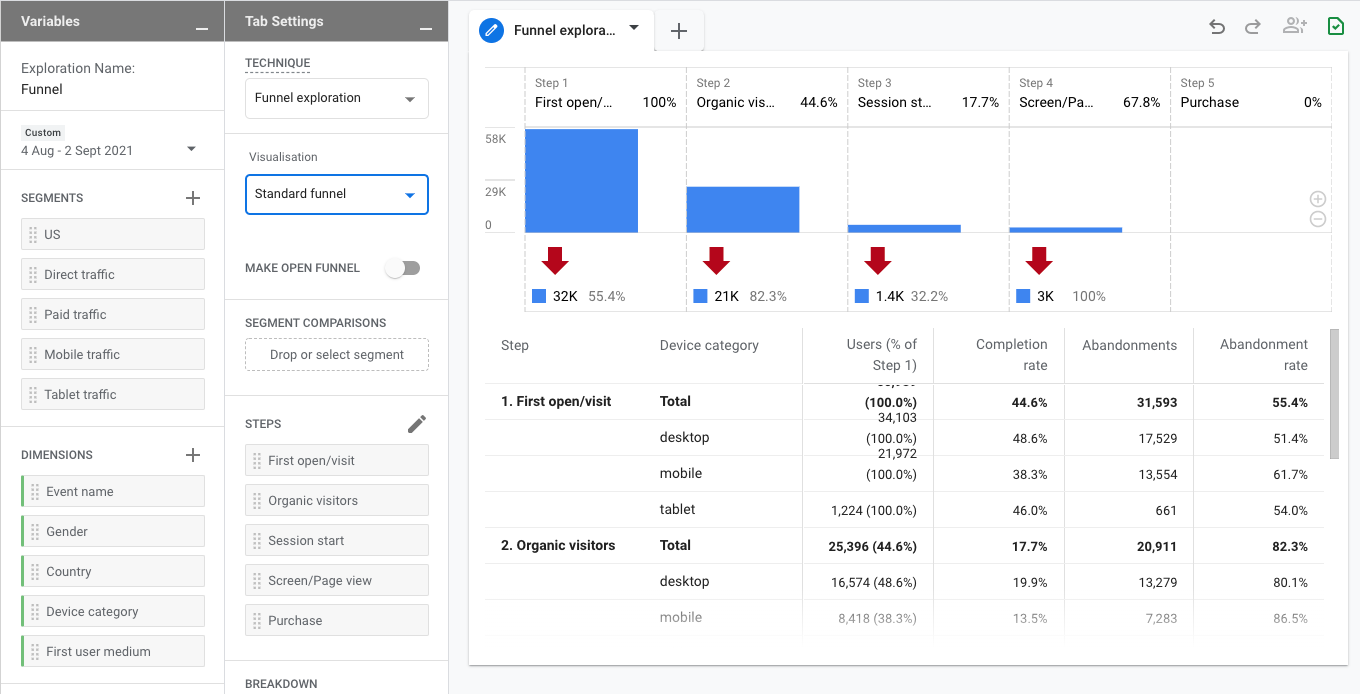
Mixpanel
Mixpanel is a powerful self-service, event-based analytics tool that provides valuable customer insights with the ease of data visualization. It is one of the popular analytic tools. They currently help the world answer 81 million product questions every year. It offers a variety of angles to look into customers, including funnel, cohort, retention analysis and limitless segmentation.

Amplitude
Amplitude is another best-of-breed product/user analytics tool. Similar to Mixpanel, it offers insights for user segmentation, funnel and cohort analysis. On top of those, Amplitude also allows you to find which events might be more relevant to conversion, as well as deep diving into the user groups that perform (or doesn’t) a specific action by looking into their individual user logs.
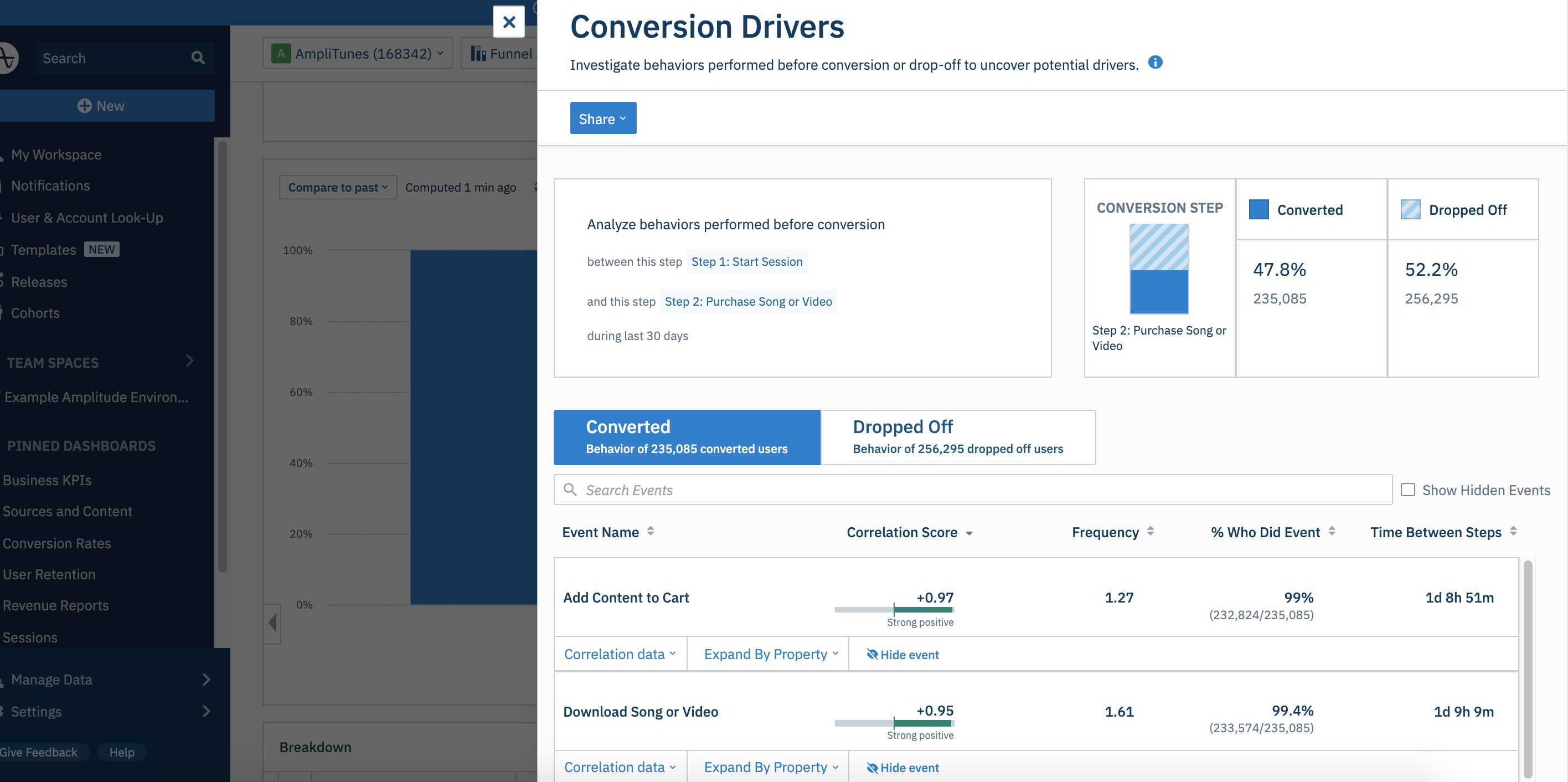
2. Qualitative user analytic tools
Qualitative analytic tools help you understand how people are using your website/app and through user recording or feedback, to help you better understand the “whys”.
You can use such tools to answer:
- How do your users navigate the website/app to perform a task?
- Where in the flow do they stop (in a visualized way)?
- Why do they drop off?
- Have they noticed the message you want to present?
Some of our best picks for qualitative user analytic tools include:
Hotjar
Hotjar is a behavior analytic tool that focuses on understanding users’ actions with heatmaps, user session recording and customer feedback collection. It helps you “see” what breaks – whether it’s confusing design, broken links or others. It is a powerful UX-focused complement to the quantitative tools.
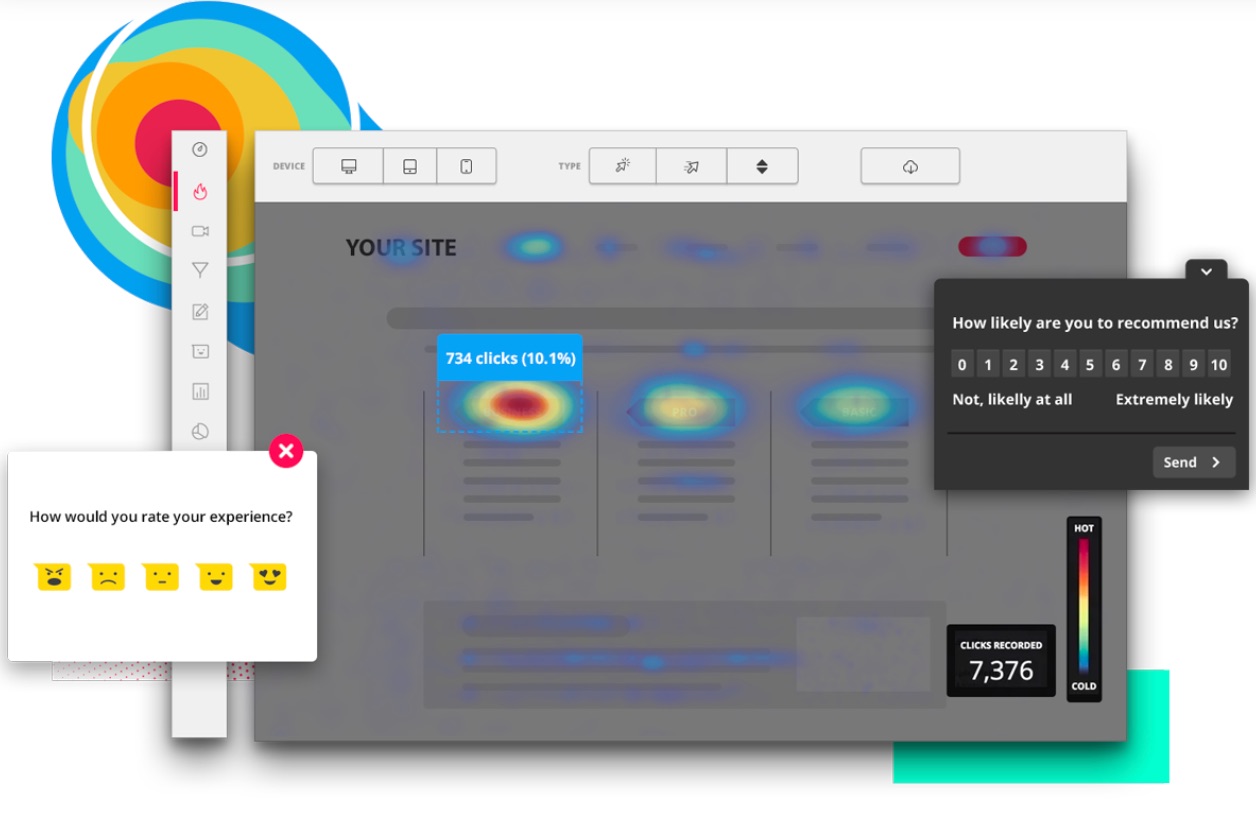
UserTesting
UserTesting features first-person understanding of how their target audience behaves throughout any experience, and why. It allows users to demonstrate how they use the product in front of a video screen and meanwhile talk with you their feedback at each stage. With user testing, you can conduct a user interview without being on-site.
3. AB testing platforms
An AB testing platform helps you streamline the process of AB testing or multivariate testing by integrating toolkits from test design, implementation to analysis, all in one place.
You can use such tools to:
- Design AB / multivariate testing or split url testing
- Create segmentation for your tests
- Schedule and conduct experimentation
- Visualize the experiment results
Some of our best picks for AB testing tools include:
VWO
VWO is a versatile AB testing platform for small businesses, and is popular among many marketers. It provides six core modules including Testing, Insights, Fullstack, Personalize, Plan and Deploy. Whether you want to deploy a testing site without developers, gain user insights with heatmaps or recording, test server-side, experiment with AI-backed personalization or plan your optimization roadmap, VWO has you covered.
AB Tasty
AB Tasty a simple-to-use platform for companies to get started with conversion optimization. Similar to VWO, it also offers a wide array of functionalities to support end-to-end CRO. Additionally, AB Tasty includes a testing API that allows users to create highly customized tests that may not be available out of the box with other platforms.
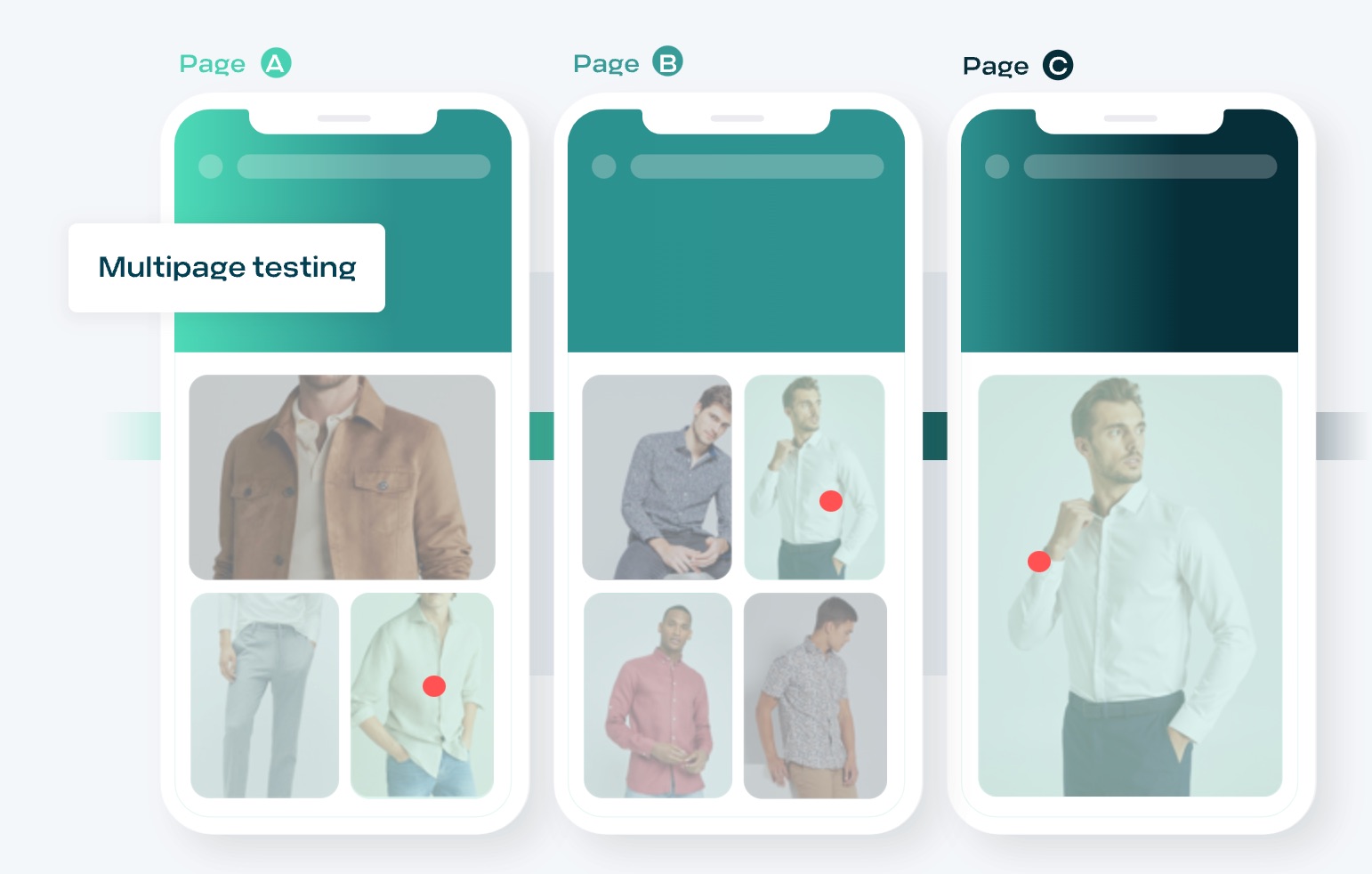
Interested in trying CRO tools? Ematic Solutions can assist you in platform sourcing, package negotiation , implementation and post-setup tool utilization. Talk to our experts to learn what suits you the best!
CRO testing targets
To optimize conversion, you want to spend the effort on where it moves the needle. You can start with identifying the critical conversion flows, such as product discovery, checkout experience or cross-sell journey.
From there, you can map the pages your users would go through. Popular testing pages include:
- Homepage
- Landing page
- Product page
- Checkout page
- Pricing page
- Wherever you receive good traffic (e.g. blogs)
Do remember to conduct funnel analysis as we introduced before to identify your areas of focus. When you are on these pages, you can then look at the components that can be changed, commonly including
- Value proposition
- Call-to-action (CTA)
- Copywriting
- Visual Design
It is again important to remember testing based on insights and hypotheses. From our past experience, the most commonly abused example – changing the CTA button from A color to B color wouldn’t really do you any help (unless it’s to improve accessibility problems). The most successful ones usually come from providing the right information that strengthens the product offering.
Here are some additional tips for CRO:
- Use A/B testing to test your changes: A/B testing is a great way to test the effectiveness of your CRO changes. By creating two versions of a page and showing them to different groups of visitors, you can see which version performs better.
- Track visitor behavior: You need to know where visitors are clicking and scrolling on your website. This information can help you identify areas where you can improve your website’s design and functionality.
- Monitor your analytics regularly: It’s important to monitor your analytics regularly to track your progress and identify areas where you need to improve. Pay attention to your conversion rates, bounce rates, and exit pages.
Ematic Solutions CRO Service
If you are in an online business, make sure you consider CRO as part of your digital marketing strategy. The efforts definitely bear fruitful results.
For those who just start off or want to turn impromptu CRO tactics into a consistent and repeatable methodology, our CRO offering can come to your aid. At Ematic, our conversion experts come from a background of growth marketing, design, data and engineering. With us, you immediately get an extended CRO team without spending a lot of time coordinating cross-functionally.
From conversion audit, strategy planning, CRO platform implementation, experimentation roadmaps to analyzing & reporting, we can assist any area you are in need of.
Action speaks louder than words. Contact us for a free CRO audit and see by yourself how we can help!

